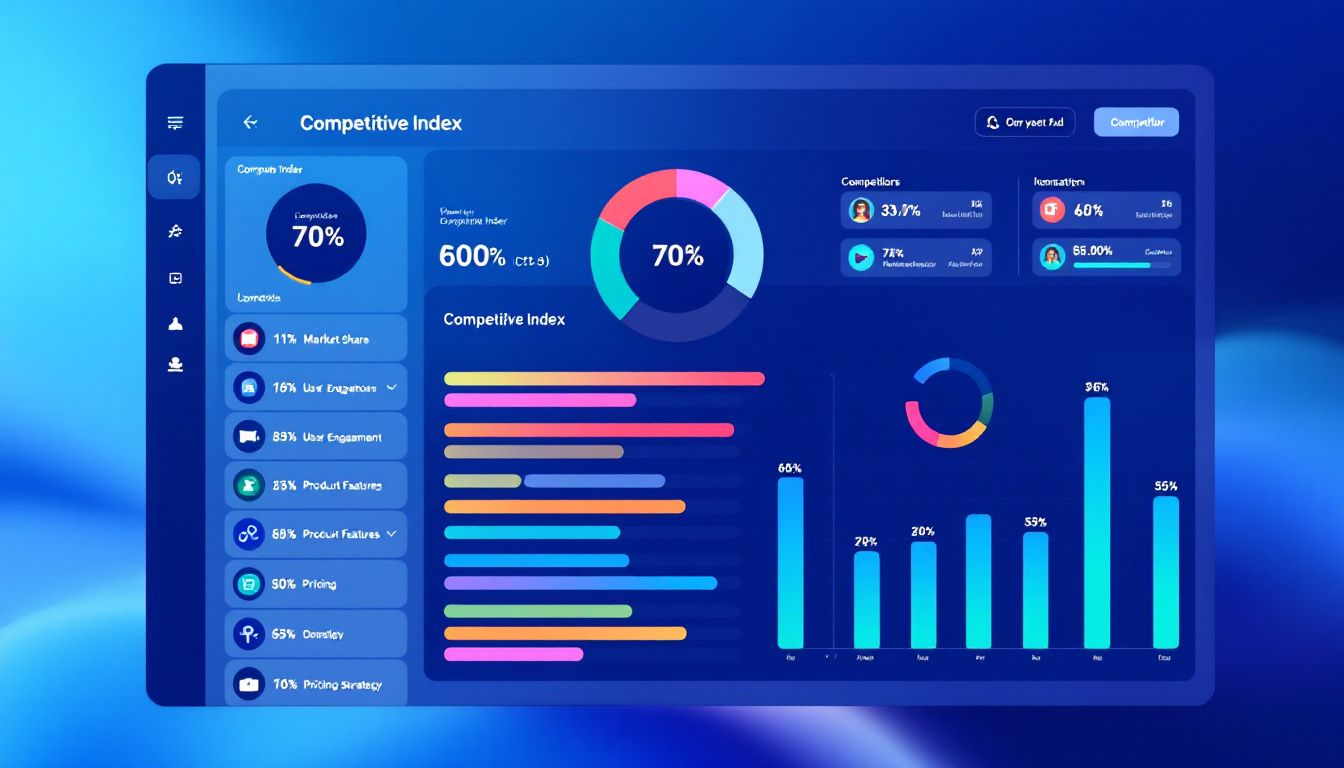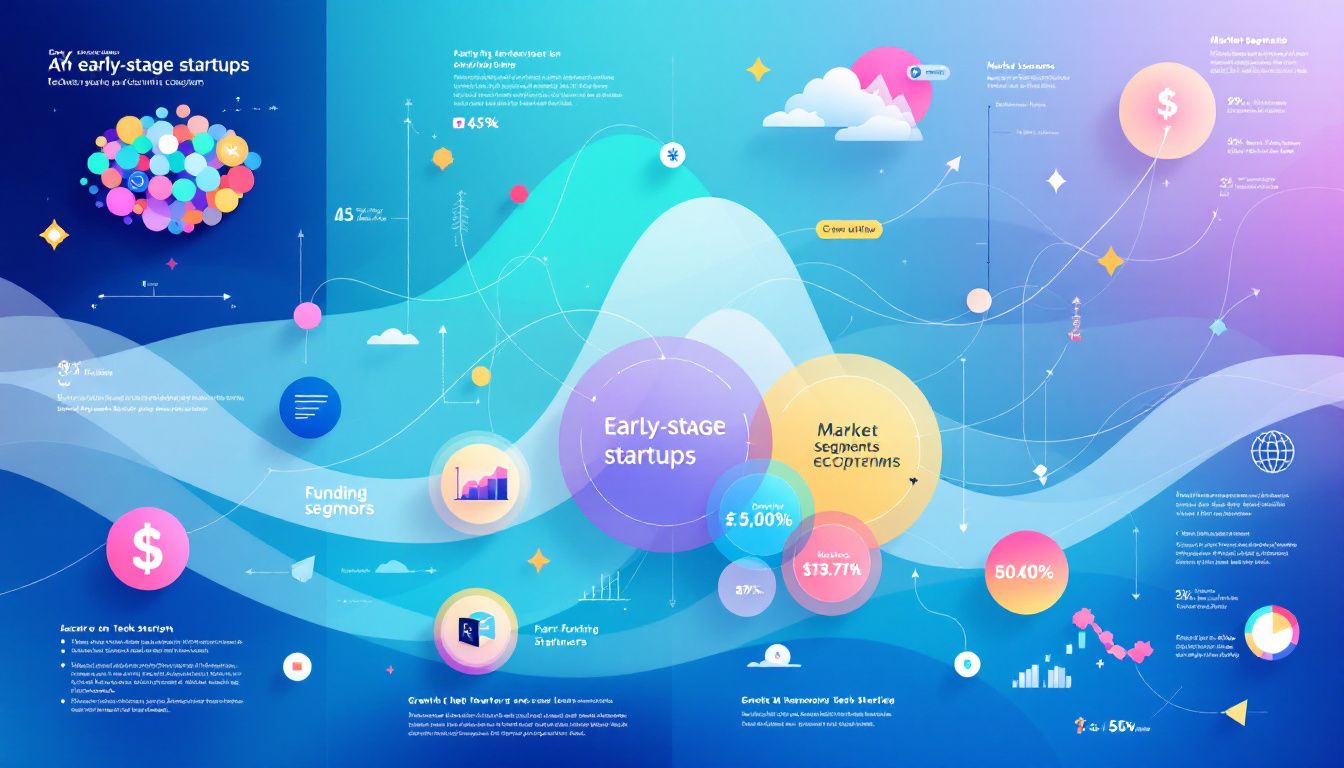Best Methods to Find Website Competitors Quickly
- Data as a Service (DaaS) Software Marketing & Analytics


Need to find website competitors quickly? This article will show you how. We’ll cover easy techniques and tools to identify your competitors online. Understanding who your competitors are can help you refine your strategy and stay ahead. Expect practical advice on using search engines, competitor analysis tools, and market research.
Key Takeaways
- Identifying direct competitors through search engine results and keyword analysis is crucial for understanding the competitive landscape and discovering market opportunities.
- Utilizing competitor analysis tools like SEMrush, Ahrefs, and SimilarWeb enhances efficiency in identifying and analyzing both direct and indirect competitors.
- Leveraging customer feedback and social media insights provides valuable understanding of competitors’ strengths and weaknesses, informing more effective marketing strategies.
Identifying Direct Competitors


Direct competitors are businesses offering the same or highly similar products and services as yours. Knowing who these players are, including any indirect competitor, is the first step in any competitive analysis. The challenge lies in pinpointing these rivals quickly and effectively.
Start by using search engine results. Typing in your main keywords along with your location can reveal the top results, which are likely your main competitors. Analyzing Google’s search results can also show businesses competing for the same keywords and content, giving you a broad view of the competitive landscape. Don’t just stop at the first page; dig deeper to uncover more competitors and find local competitors to understand the full spectrum of your market.
Understanding your key competitors allows you to capitalize on their mistakes and identify opportunities for your own growth. Analyzing the strengths of your significant competitors informs your strategy and enhances your unique value proposition. This approach not only helps in identifying competitors but also in finding gaps in the market that you can exploit.
Using Competitor Analysis Tools


Manual competitor research can be time-consuming and inefficient. Fortunately, there are numerous online tools designed to streamline this process. These competitor analysis tools can help you uncover both direct and indirect competitors swiftly and provide detailed insights into their strategies.
Tools like SpyFu, Crayon, and social media monitoring platforms enable businesses to automate the process of finding online competitors and analyzing their performance. Using these tools provides deeper insights into competitors’ strategies, tracks their changes, and benchmarks your performance against theirs.
Here are some of the most effective tools available.
SEMrush
SEMrush is a powerful tool for identifying search competitors. Its Organic Research Competitors report helps you find competitors by analyzing shared keywords and organic traffic data. Setting up a Position Tracking campaign with target keywords effectively identifies top competitors, even for new websites without established keyword rankings.
The Backlinks Competitors report and Keyword Gap tool in SEMrush can further enhance your SEO strategy by identifying competitors’ backlinks and gaps in your own keyword profiles. This comprehensive approach allows you to discover competitors in organic search results and develop strategies to outperform them.
Ahrefs
Ahrefs is another essential tool for competitive analysis. It offers functionalities for analyzing backlinks, identifying content gaps, and examining both organic and paid search traffic. Analyzing competitors’ backlinks uncovers their linking strategies and identifies opportunities for your own link-building efforts.
Ahrefs also helps you optimize your SEO strategies by providing insights into competitors’ website traffic and keyword rankings. This detailed analysis can inform your strategy and help you stay ahead in the competitive landscape.
SimilarWeb
SimilarWeb provides instant access to detailed traffic analysis and insights into both direct and indirect competitors. It helps you discover websites that compete closely with yours by analyzing organic and paid search traffic. This tool is particularly useful for understanding your market position and identifying new competitors.
Leveraging SimilarWeb provides a comprehensive view of top competitors and their strategies, aiding in informed decision-making to outperform them.
Analyzing Organic Competitors


Organic competitors are those who rank for the same keywords in organic search results. Identifying these competitors is crucial for understanding the competitive landscape of your industry. Regular monitoring of competitor performance allows you to adapt your strategies based on changes in the search engine landscape.
Assessing competitors’ backlink strategies can reveal opportunities for acquiring high-quality backlinks to improve your site’s SEO. Staying on top of organic competitors ensures your SEO efforts align with the latest market dynamics.
Exploring Social Media Platforms
Social media platforms are gold mines for competitor research. They not only reveal who your competitors are but also provide insights into their marketing strategies and customer interactions. Monitoring social media conversations can highlight other businesses that customers consider while making decisions.
Exploring groups and communities where customers ask for advice can also reveal discussions about competitors. Leveraging social media platforms provides a deeper understanding of competitors’ digital marketing strategies, enabling you to adapt your own.
Monitoring Facebook and Instagram
Using tools like NapoleonCat can help you track competitors’ Facebook Page insights, including content performance and audience engagement. Monitoring audience reactions to competitors’ posts identifies what content resonates with their target audience, allowing you to adapt your strategy.
Consistently tracking these metrics allows businesses to stay informed about social media trends and adjust their strategies to maintain competitive advantage.
Utilizing LinkedIn
LinkedIn is particularly useful for identifying B2B competitors and understanding their professional networking tactics. Analyzing competitors’ engagement with industry-relevant content provides insights into their market strategies and networking approaches. This platform also provides valuable data on professional connections and industry trends, which can inform your own B2B marketing strategies.
Engaging with Twitter
Real-time monitoring on Twitter allows you to track competitors’ marketing tactics and customer interactions. Observing competitors’ handling of customer service interactions and trending topics reveals insights into their strategies, aiding in improving your own marketing plans.
Twitter’s real-time nature makes it an invaluable tool for staying updated on competitors’ activities and market trends.
Conducting Market Research


Conducting thorough market research is essential for identifying competitors and understanding market dynamics. Keyword research can help identify indirect competitors that compete for similar audience attention. Using local business directories and Google My Business insights can reveal how many people find competitors’ listings through searches, aiding in competitive analysis.
Regularly evaluating competitors helps measure progress, spot trends, and understand customer expectations.
Industry Reports
Industry reports provide comprehensive data on key players and emerging trends in the market. The Market Explorer tool in SEMrush, for example, provides insights into estimated traffic and audience demographics, helping you understand market dynamics. These reports can offer a detailed analysis of competitors, highlighting market shares and new trends that can inform your strategic decisions.
Trade Media and Conferences
Trade media publications are valuable resources for identifying emerging trends and potential new competitors. Attending trade conferences allows businesses to network and stay updated on shifts in the market.
These platforms provide opportunities to gather deep insights into industry trends and competitors’ strategies, which can inform your own marketing strategies.
Leveraging Customer Feedback
Customer feedback can be a goldmine for competitor research. Asking customers about other businesses they considered helps identify competitors that might not be on your radar. Analyzing customer feedback on competitors provides insights into their strengths and weaknesses from the consumer’s perspective.
Using tools like Natural Language Processing (NLP), AI can analyze customer sentiments in reviews, offering insights into competitor perception. Understanding why customers choose alternative brands can help formulate effective strategies against competitors.
Checking Business Directories
Business directories like Yelp, Google, and Yellow Pages are essential tools for discovering local competitors. Utilizing Google Maps can help identify local competitors by searching for specific products and services along with the location.
Reviews from these directories provide valuable data that can be analyzed to gain insights into competing businesses.
Evaluating Paid Search Competitors
Paid search competitors can be identified by examining paid ads that target the same keywords as your business. Tools like Ahrefs offer functionalities for analyzing both organic and paid search traffic of competitors.
The Paid Traffic Research tab in these tools provides insights into competitors in Google Ads, including paid advertising data, keywords used, and traffic cost.
Mapping Out Competitive Landscape


Mapping out the competitive landscape involves systematically analyzing competitors to determine their strengths, weaknesses, and market positions. Key elements include product offerings, market positioning, pricing strategies, and customer experiences.
Using tools like Google Ads Auction Insights can provide indicators on how often your ads are shown compared to those of competitors. AI can also simplify performance assessments by generating competitive benchmarks and identifying content patterns from competitors.
Utilizing AI for Competitor Research
AI tools like the AI Competitor Finder can aggregate and synthesize data from multiple websites, simplifying the research process. These tools provide comprehensive insights into industry competitors, saving time and effort in gathering information.
AI can also uncover key players, their strengths, weaknesses, and market trends, giving you a clear understanding of the competitive landscape.
Performing SWOT Analysis
A SWOT analysis evaluates:
- Strengths
- Weaknesses
- Opportunities
- Threats
This framework helps you comprehend competitors’ advantages and challenges. It enhances the effectiveness of SEO competitor assessments and aids in strategic positioning.
Identifying opportunities for competitors through market trends or potential partnerships can inform your own strategic decisions and growth plans.





